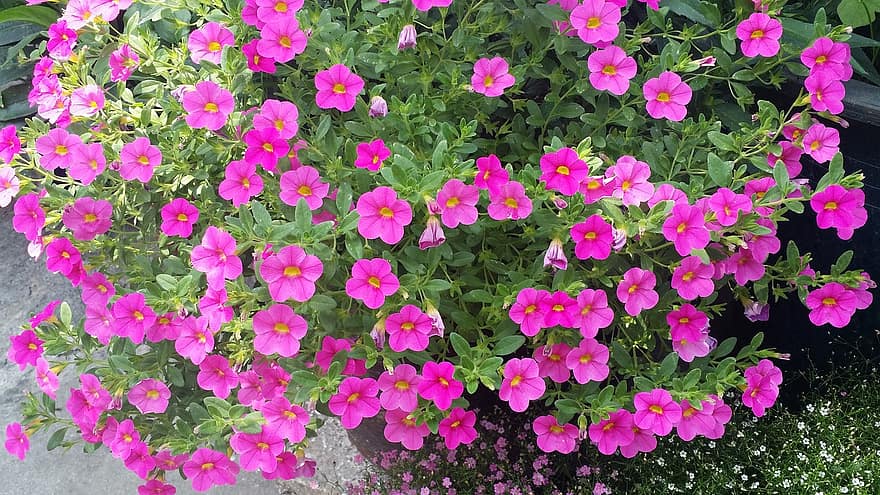You can quickly learn how to propagate petunias from seeds or cuttings and guarantee their survival using a greenhouse. For starters, you can ensure that the seeds will germinate, and your plants will be healthy enough to provide the cuttings by growing them in a controlled environment. The greenhouse will ensure that it stays within the optimal temperatures to support your petunias’ growth and health.
It’s not surprising that gardeners are interested in rooting petunias. After all, they offer different colors and forms and even have an extended flowering period to keep your garden looking magnificent. When grown as summer annuals, petunias can also tolerate drought, making it less likely for you to make errors in caring for them.

Easiest Ways On How To Propagate Petunias
Propagating petunias is a worthy endeavor for the gardener, whether it’s for personal pleasure or as a source of income. After all, petunias can improve the look of borders and are even useful groundcovers for various landscapes. You can grow them as annuals, but you can also treat them as perennials if you’re in growing zones 9 to 11.
Growing petunias from seeds
Perhaps rooting any plant from seeds is the easiest way, especially for newbie gardeners. The same concept applies to petunias, and you can guarantee success, especially when you grow them indoors. This is because the greenhouse will protect the seeds from fluctuating temperatures and potentially harsh weather that can prevent them from germinating and growing successfully.
To start, you must remember that petunias love sunlight. They thrive well from the heat during summer, which is why early sowing of seeds, especially in the garden, puts you at risk of rotting or sullen plants. Instead, start your seeds indoors at ten weeks before you intend to plant the seedlings.
Depending on your location, you can adjust the timing of sowing petunia seeds. Those in the north do this in the first week of March, but you can do it earlier when you’re in the south. Using a greenhouse should protect the seeds and very young plants to ensure that they’ll be healthy and ready for transplanting.
How to sow petunia seeds
You can use planting trays or eggshells for the petunia seeds. Fill them with a seed-starting mix of your choice and sprinkle the seeds on top. Moisten the plants afterward before covering the tray with a plastic wrap to ensure that the soil stays moist.
You want to place this tray in a bright area and not receive direct sunlight to prevent the seeds’ damage. To give you a better understanding, the location should be around 75°F to encourage germination. And then, once you see the seeds sprout, remove the cover and place the tray 6 inches under lights in an area of 65°F.
For maintenance, fertilize with a water-soluble fertilizer once every two weeks and check the soil when it gets dry to know when to water. The seedlings will be ready for transplanting after developing two or three true leaves.
Growing petunias from cuttings
There are reasons why gardeners prefer to propagate petunias from cuttings instead of seeds. For example, you have to wait for a year before using the seeds you collected if you’re using hybrid petunia varieties. If you are in the northern US, petunias might also take until the middle of the summer before they bloom and allow the seeds’ collection.
Petunia seeds also tend to be challenging to use because they are small. Instead, you can use an existing plant to get cuttings for rooting. This method is reasonably straightforward, wherein you’ll collect from the tip of a petunia stem in the morning.
The cutting should have no flowers or buds, and don’t forget to remove the lower leaves. Dip it in rooting hormone powder and place the cutting in a mixture of your choice. Remember to moisten the medium before putting the cutting and holding it in place by pushing the soil around it.
The cuttings will thrive under a light shade so that you can cover the container with a plastic bag. Ensure that moisture will still evaporate under this setting, and the bag shouldn’t touch the cutting. Maintain moisture by removing the bag each morning and misting every other day.
Conclusion
The long flowering period and eye-catching beauty of petunias make them one of the best plants to propagate. But do you know how to propagate petunias properly? You can either use seeds or cuttings for petunias and put them indoors to strengthen them for transplanting later on.
The greenhouse is an ideal growing environment for young petunias because it prevents unstable conditions. For the seeds, you can sow in March or earlier, depending on your location. Given that the temperatures are absolute and they are well-hydrated, petunia seeds should germinate successfully.
On the other hand, you can use your healthy existing petunias to collect cuttings for propagation. The seeds might be too tiny for some, so using cuttings is the easier way. Cut in the morning, remove any buds or flowers on the cutting, and cover the container with a plastic bag.
Like with seeds, moist soil is crucial for the survival of your young plants. Afterward, you can prepare for transplanting on your outdoor garden.
